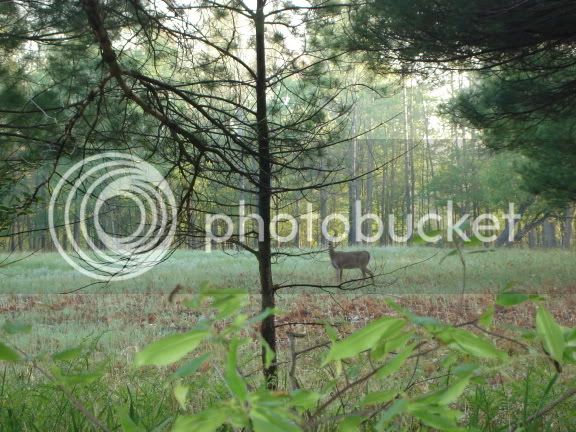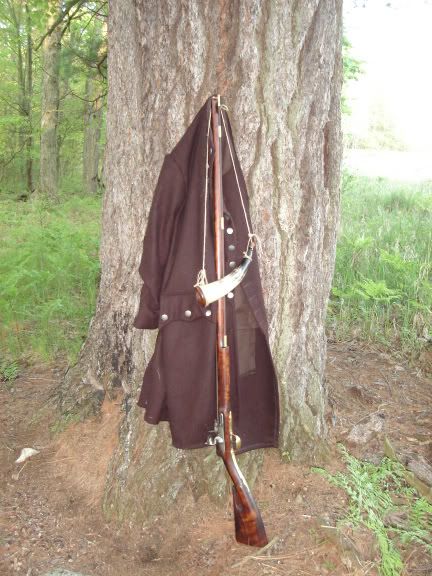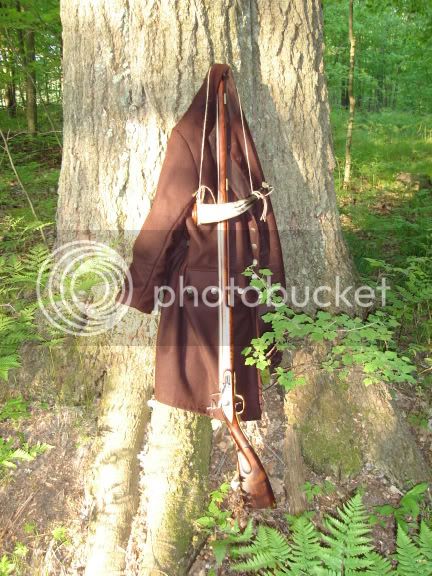Tim Richards
32 Cal.
- Joined
- Apr 12, 2005
- Messages
- 46
- Reaction score
- 0
Spent another morning in the woods. Not a gobble, yelp, cluck or putt to be heard. Some hens have been seen with chicks? poulets? this week. I did see a mature tom Tuesday afternoon in full strut with three hens, no toms since.
I was sitting under a big old white pine when I heard steady, low "bleh" over and over moving my way. Took a look over my shoulder to see a doe heading my way. Dressed in 18th century town clothes, she didn't seem to notice me until I took a couple of pictures. I suspect she had a fawn or two nearby. Maybe the tom will show tomorrow.

The doe was approaching this mature white pine. A retired Forest Service forester friend of mine estimated its age in the 200 year range, give or take a decade or two, its probably middle-aged. Its survived at least two forest fires and numerous lightning strikes, though a strike a few years ago split the heavy, thick bark so its days may be numbered. Many a buck has been taken by my family from under it since the late 1800's.

One last picture from this morning's hunt, the Grandfather Oak. It would take two men with long wingspans to reach around it. I like to sit under it to think, listen to sounds of the woods, and, of course, hunt. Perhaps it started its life around the time of the Civil War. We had a selective cut about 5 years ago, the largest oaks (smaller than this one, which we wanted saved) had rings numbering from 98 to about 120.

I was sitting under a big old white pine when I heard steady, low "bleh" over and over moving my way. Took a look over my shoulder to see a doe heading my way. Dressed in 18th century town clothes, she didn't seem to notice me until I took a couple of pictures. I suspect she had a fawn or two nearby. Maybe the tom will show tomorrow.

The doe was approaching this mature white pine. A retired Forest Service forester friend of mine estimated its age in the 200 year range, give or take a decade or two, its probably middle-aged. Its survived at least two forest fires and numerous lightning strikes, though a strike a few years ago split the heavy, thick bark so its days may be numbered. Many a buck has been taken by my family from under it since the late 1800's.

One last picture from this morning's hunt, the Grandfather Oak. It would take two men with long wingspans to reach around it. I like to sit under it to think, listen to sounds of the woods, and, of course, hunt. Perhaps it started its life around the time of the Civil War. We had a selective cut about 5 years ago, the largest oaks (smaller than this one, which we wanted saved) had rings numbering from 98 to about 120.






